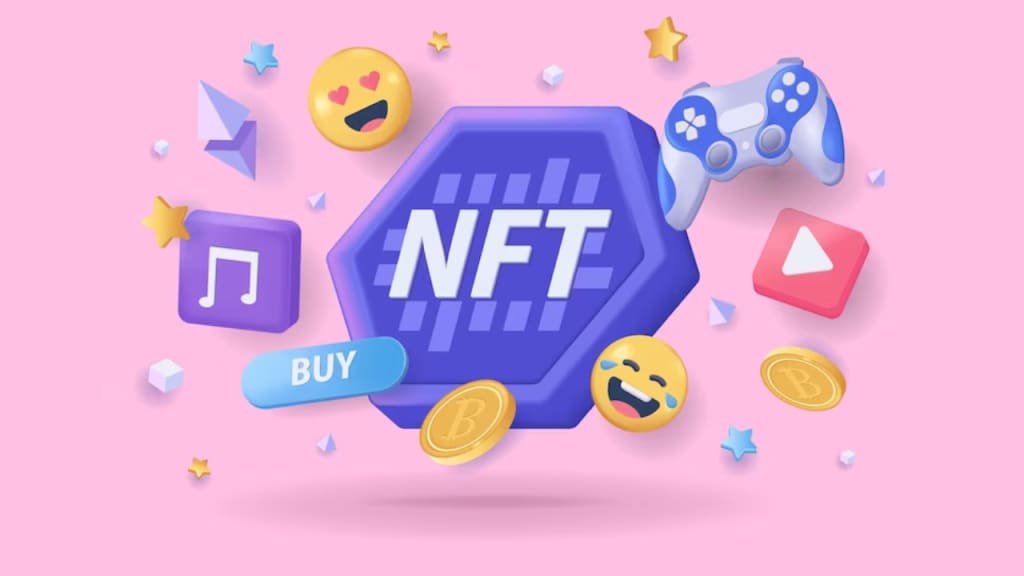Securely Manage Your Digital Assets with NFT-Based Asset Management
How Can Blockchain Be Used To Keep Digital Assets Safe?

Blockchain has been trending in recent years due to the financial implications that correlate with cryptocurrencies. Blockchain is a decentralized, immutable, decentralized database for storing transactions made by users without the need for a trusted third party. Similar to cryptocurrencies, tokens are objects that represent digital or physical assets on a blockchain network. The market value of tokens has increased dramatically in recent years due to breakthroughs in protecting intellectual property and being used in many other areas such as tourism, education and the arts. Non-Fungible Tokens (NFTs) are unique and fungible tokens as they differ in kind and value due to their rarity. Using NFTs to manage educational resources is an effective way to protect intellectual property and educational resources from fraud. This blog describes a framework for NFT-based asset management for managing assets on the metaverse that uses blockchain technology to authenticate asset ownership.
What is an NFT-Based Asset Management System?
An NFT-based asset management system is a digital platform that uses non-fungible tokens (NFTs) to represent and manage ownership of digital assets, such as artwork, collectibles, and virtual real estate. NFTs are unique digital assets stored on a blockchain and can be bought, sold, and traded like traditional physical assets. An NFT-based asset management system allows users to easily buy, sell, and manage their digital assets securely and transparently.
Benefits of NFT-Based Asset Management System
NFT (non-fungible token)-based asset management systems offer several benefits, including:
- Provenance: NFTs enable tracking an asset's ownership history and authenticity, providing a clear chain of custody.
- Digital scarcity: NFTs allow for the creation of unique, one-of-a-kind digital assets that cannot be replicated, providing scarcity and value.
- Interoperability: NFTs can be stored and traded on blockchain platforms, enabling interoperability with other decentralized systems and applications.
- Decentralization: NFTs enable the creation and management of assets without the need for a centralized intermediary, providing greater transparency and security.
- Flexibility: NFTs can represent a wide range of assets, including digital art, collectibles, and even real-world assets such as real estate and fine art.
- Liquidity: NFTs can be easily bought and sold on various marketplaces, making it easy for people to trade their assets.
- Smart contract enabled: NFTs can be programmed with smart contracts to enable automation of the ownership transfer process and other functionalities, making it more efficient.
NFT-Based Asset Management System Components
An NFT-based asset management system generally includes the following components:
- Blockchain: The underlying technology that enables the creation, storage, and transfer of NFTs. Ethereum blockchain is the most commonly used for creating NFTs, but other blockchain platforms like Binance Smart Chain and Polygon also support NFTs.
- Smart Contracts: Self-executing contracts that enable the automation of the ownership transfer process and other functionalities associated with NFTs.
- Wallet: A digital wallet is required to store and manage NFTs, which can be accessed and controlled through private keys.
- Marketplaces: Platforms where NFTs can be bought, sold, and traded. These marketplaces can be decentralized or centralized.
- Metadata: Additional information and details about an NFT, such as the name, description, and image of the asset.
- Interoperability: NFTs can be stored and traded on multiple blockchain platforms. Interoperability solutions are being developed to enable the seamless exchange of NFTs across different blockchain networks.
- Tools: Toolkits and libraries to create and mint NFTs and other tools to manage and interact with NFTs.
- Identity: Identity solutions like uPort, Civic, and others, are also being integrated with NFTs to provide verifiable identities for the creators and owners of NFTs.
- Oracles: Oracles can be used to connect the blockchain with off-chain data, such as market prices, to enable smart contract functionality.
Use Cases of NFT-Based Asset Management System
NFT-based asset management systems can be used in a variety of ways, including:
- Digital Collectibles: NFT-based asset management can be used to manage unique digital collectibles, such as digital art, trading cards, and virtual real estate.
- Gaming: NFT-based asset management can be used to manage in-game items, such as weapons, armour, and other virtual assets, that can be bought, sold, and traded on the open market.
- Music and Film: NFT-based asset management can be used to manage digital music and film assets, such as songs and movies, which can then be sold or licensed to others.
- Real-world assets: NFT-based asset management can be used to manage ownership of real-world assets, such as real estate, fine art, and other physical assets, which can then be traded and tracked on the blockchain.
- Supply Chain Management: NFT-based asset management can be used to track and authenticate products as they move through the supply chain, helping to prevent fraud and improve efficiency.
- Certificates and credentials: NFT-based asset management can be used to track and represent certificates, credentials, and other forms of digital documentation, which can be used to verify the authenticity of educational degrees, professional licenses, and other documents.
Advantages of NFT-Based Asset Management System
NFT-based asset management systems have several advantages, including:
- Immutable ownership: NFTs are stored on the blockchain, which is an immutable, decentralized ledger. This means that ownership of an NFT can be easily and transparently tracked and cannot be tampered with.
- Scarcity: NFTs can be used to create unique digital assets, which can be limited in supply. This makes them valuable as collectibles and can increase their value over time.
- Liquidity: NFTs can be easily bought and sold on various marketplaces, making it easy for owners to liquidate their assets.
- Provenance: NFTs can be used to create a digital trail of ownership, which can be used to verify the authenticity and provenance of an asset.
- Automation: NFT-based asset management systems can automate the process of tracking, transferring, and managing assets, reducing the need for intermediaries and increasing efficiency.
- Interoperability: NFTs can be used across different platforms, ecosystems, and applications, allowing for greater flexibility and integration with other systems.
- Accessibility: NFTs allow for fractional ownership and decentralized ownership, making it easier for people to access and invest in assets that were previously out of reach.
Conclusion
White Label NFT Metaverse Blockchain Event
An NFT-based asset management system is a digital platform that uses non-fungible tokens (NFTs) to track, manage, and authenticate ownership of digital assets such as art, collectibles, and other unique digital items. . This type of system enables the creation and transfer of ownership of digital assets in a secure and auditable manner and is useful for a variety of applications such as: B. Traceability of online marketplaces, digital collectible games, and digital art.
For asset managers and custodians, the best way to understand how NFTs can be leveraged is to get involved early with the many startups popping up in the space. It is difficult to assess the magnitude of NFT's future market impact at this time, but given the current rate of innovation, this could result in an unprecedented generational shift in the industry. When that happens, these start-ups will need help navigating this change. In short, now is the perfect time for the wealth management industry to embrace these new concepts and help define the future leaders of the wealth management industry.
About the Creator
Angelika Candie
Blockchain Analyst & Technical Content Writer






Comments
There are no comments for this story
Be the first to respond and start the conversation.